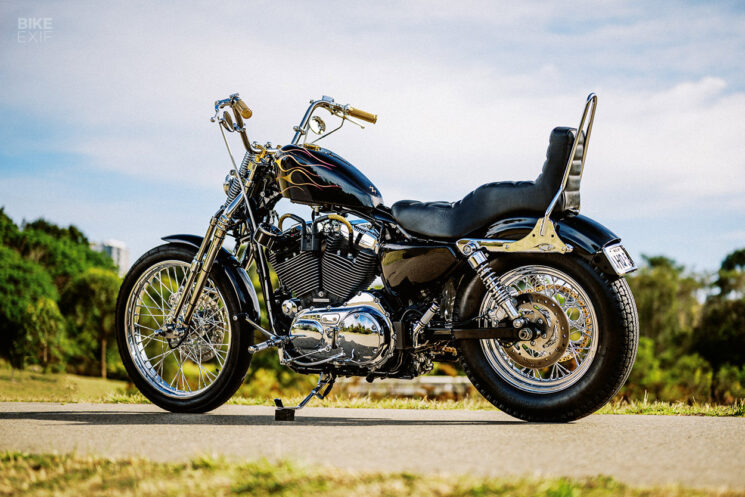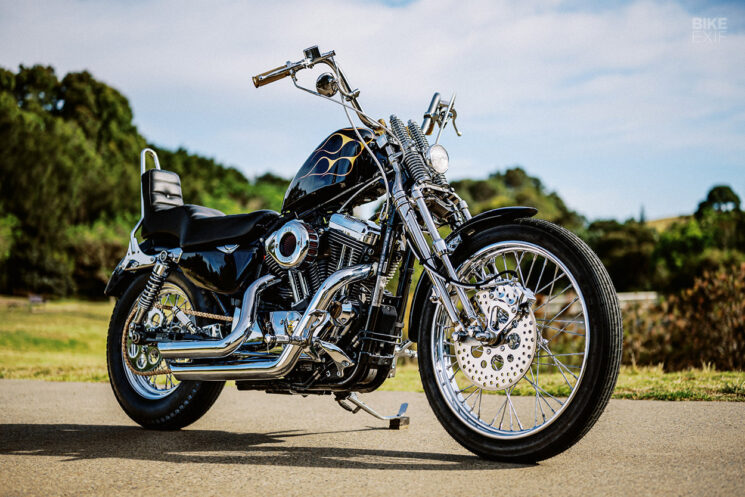
On November 18, 2022, Harley-Davidson rolled the last air-cooled Sportster ever to be built off their assembly line in York, Pennsylvania. The announcement marked the end of an era in the motorcycling world; a book-end for the iconic everyman’s V-twin that had been in constant production since 1957.
While the total number of Sportsters in existence is now officially capped somewhere well into the tens of millions, the death of the Evo comes with a silver lining: with obsolescence comes street cred.
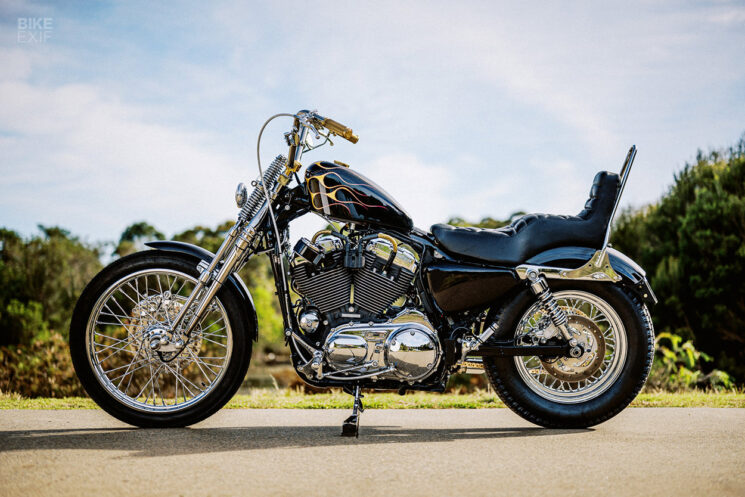
Few understand this as well as Sydney, Australia’s Zen Motorcycles. They’ve turned this 2015 Harley-Davidson Sportster Seventy-Two into a reliable daily driver, with all the classic cool of an old ironhead. All that’s missing is a kickstarter (if you know where to look, of course).
This build started when a client approached Zen asking for a 70s-style chopper, with modern performance and reliability. An abundance of chrome was high on the priority list too, but everything else was largely left up to the Zen crew. A late-model Sportster Seventy-Two was sourced as the ideal starting point.

Work smart, not hard, as they say. Harley first introduced the Seventy-Two back in 2012, and both the name and style were meant to invoke the 70s-era chopper craze of the time. Included in the factory package was the classic 2.1-gallon peanut tank that still lives on the bike today, as well as a full suite of factory chrome options, including the engine, wheels, and shocks.
This laundry list of OEM chrome bits shortened the build to-do list considerably, but transforming the stock Sporty into the clean custom you see here was no easy task. The team had made up their mind early on that a springer front-end was just what the Seventy-Two needed to truly capture that 70s charm. Sourcing the forks was easy enough—but making them work with the modern frame took some creativity.
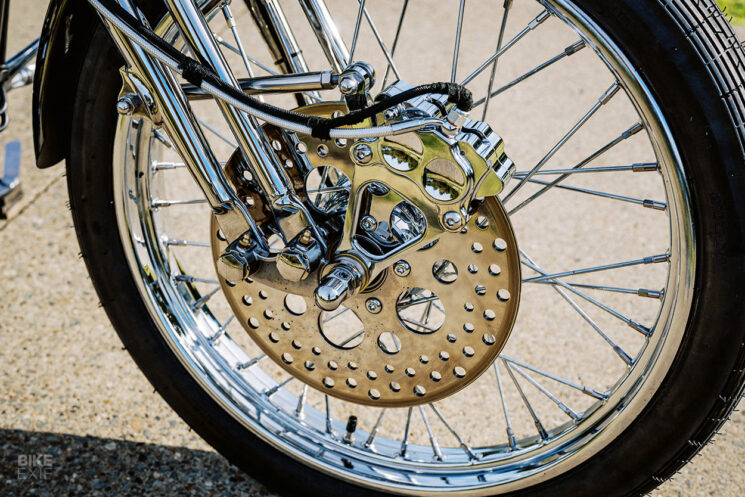
The shiny set of stock-length springers you see here was sourced directly from Lowbrow Customs in the US—but unfortunately, they weren’t exactly plug-and-play with the customer’s needs. The main hurdle was maintaining the Seventy-Two’s factory ABS braking, which required some serious fabrication to adapt to the springer.
For that, Zen handed the bike off to their friend Edi Buffon at Machine 1867—a one-man fabrication shop a few miles down the street. Edi worked his magic on the forks, and when the bike came back to the shop, Zen was able to finish off the front-end setup. Chrome calipers were supplied from Performance Machine, the factory rotors were swapped with drilled stainless units from Russell, and custom spacers were added to bring it all in line.
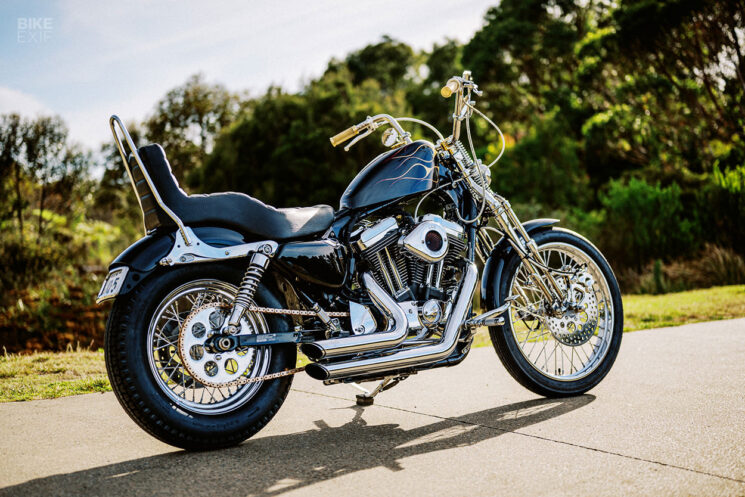
Out back Zen largely left the Sportster unmolested, keeping the factory swingarm, shocks, and brake components in place. The factory belt drive was swapped for a chain conversion kit for a little extra ironhead style, and the rear sprocket was given the chrome treatment to match the rest of the Sporty’s brightwork.
With the chassis sorted out, it was time to add some color to the Seventy-Two. Zen says the client’s only stipulation there was that gold be worked into the theme to some degree, giving them free rein to choose their own muse from a catalog of 70s influences.

The result is really something special. From a distance, it’s easy to mistake this as your typical ‘vivid black’ Sporty with an added Ohio flame job. Up close, however, it’s a whole different story.
That’s because Zen used the deepest purple paint we’ve ever seen, with metal flake buried under more coats of clear than we care to count. The flames themselves are done the old-school way, with hand-laid gold leaf gilding outlined in purple pinstripes.
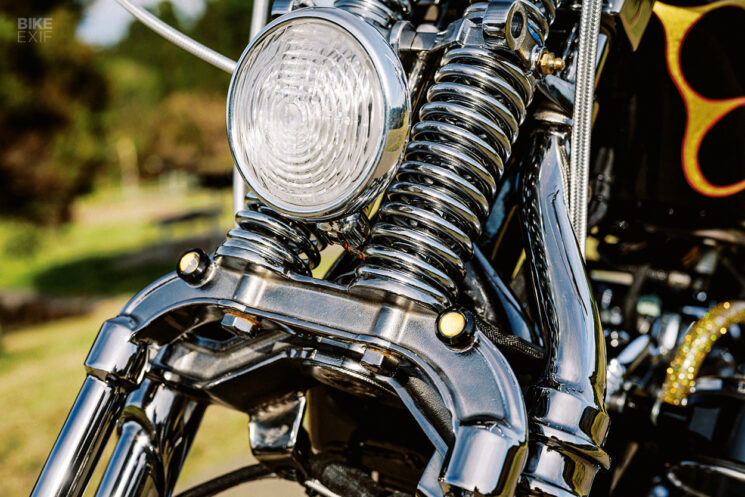
Zen continued the gold theme throughout the bike, but opted for polished brass details rather than 24-karat bling, for reasons we shouldn’t need to explain here. The bar risers, grips and gas cap are all done in brass, while the spark plug leads put an extra pop of gold glitter front and center.
The final piece of the puzzle was finding a way to stash all the clunky modern electronics, which Zen pulled off handily. Stock lighting was replaced top to bottom with minimalist Kellermann LED hardware; the dime-sized turn signal pods on the front of the springer are a particularly nice touch. The OEM gauge cluster was retained, but Zen moved it down by the front cylinder for an unobstructed cockpit.
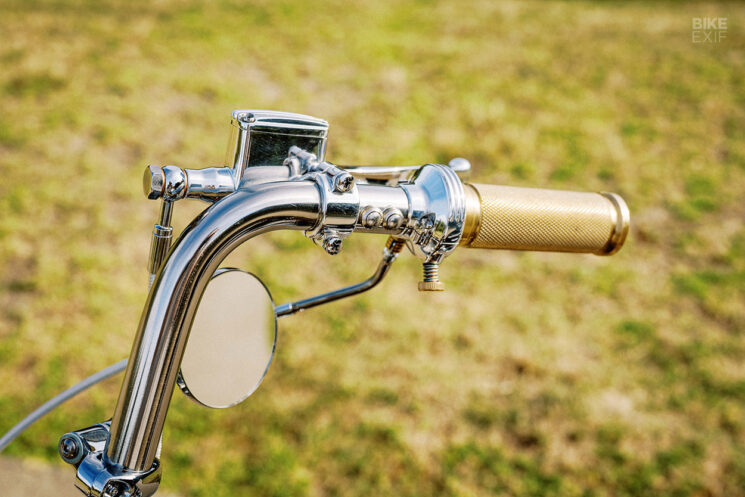
As for the controls themselves, Zen integrated flush-mount single-press buttons into a set of custom-made handlebars, giving the look of a properly bare-bones machine. They were able to wire all the new components without losing any of the CAN bus functionality—so as far as the onboard ECU is concerned, the Sportster is still completely stock.
Final touches include a Mustang leather seat, a chrome sissy bar from Lowbrow Customs, a full chrome nuts and bolts kit, and the addition of braided brake and clutch cables. Zen even added a bit of performance for good measure, with an S&S teardrop intake and a set of Vance & Hines ShortShot pipes, to help the Seventy-Two’s bite match its bark.

The Sportster as we know it may be relegated to the pages of history, but bikes like Zen’s Sporty Seventy-Two will continue to carry the torch for generations to come.
It’s unnerving to think that all new Harleys may be powered by something other than internal combustion fifteen short years from now. But we take comfort in knowing we won’t have to go digging for old ironhead parts to have a timeless classic in the garage when that time comes.
Zen Motorcycles | Facebook | Instagram | Images by Andrew Jones
